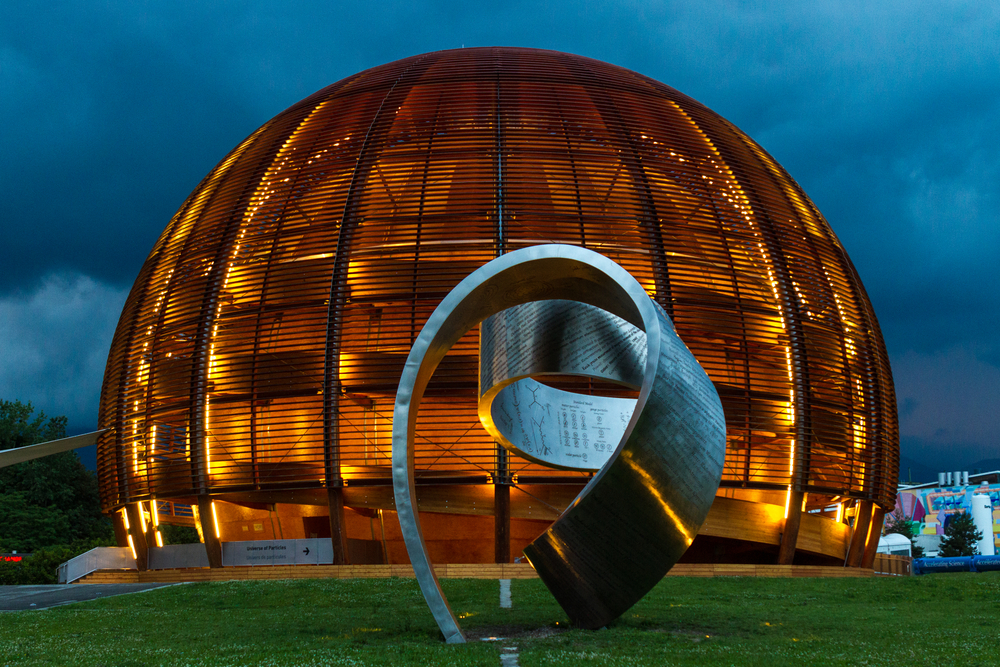Discovered: A (Theoretical) Fusion Technique 8 Times Stronger Than One In H-Bomb
Posted on Categories Discover Magazine

When hydrogen atoms fuse together, they release a vast amount of energy. That’s the principle that makes hydrogen bombs so frighteningly powerful, and it’s part of what powers our sun as well. Now, researchers from the Large Hadron Collider (LHC) say they’ve uncovered a kind of theoretical particle fusion that’s almost eight times more energetic than the fusion of two hydrogen atoms.
The discovery, reported in Nature this week, came during the course of an experiment aimed at making a doubly charmed baryon. That’s some heady physics-speak, but baryons are just a class of sub-atomic particle — both protons and neutrons are baryons — and the “charmed” moniker simply refers to the kind of quarks — the tiny particles that comprise larger ones like protons and neutrons — it’s made out of. So, a doubly-charmed baryon is a particle made from two charm quarks and one up quark. Got it?
Zoom, Crash
Researchers are continuously running experiments with the LHC to see what kinds of particles they can create by smashing atoms into one another. When the atoms go fast enough, they’re broken apart by the collision, and sometimes the energy involved is enough to force particles together into new configurations. These new particles let the researchers test assumptions about their grand theory of physics, called the “Standard Model,” which describes how every particle in the universe interacts with each other.
When observing their new, doubly-charmed baryon, researchers from the University of Chicago and Tel Aviv University found that it took a lot of energy to force the two charm quarks together, about 130 megaelectronvolts (MeV). There’s a payoff for that effort though, because the process of fusion ends up producing even more energy, for a net release of 12 MeV for the two charm quarks. That’s only about two-thirds of what we get from normal hydrogen fusion, but when the researchers extrapolated that reaction to another kind of quark, the much heavier bottom quark, those numbers went way up.
Theoretically, fusing two bottom quarks takes about 230 MeV, but the payoff is exponentially larger, around 138 MeV. That’s almost eight times as much as hydrogen fusion, making the explosive result that much bigger.
That’s a Lot!
The largest hydrogen fusion bomb ever tested was the Russian Tsar Bomba, which gave off about 50 megatons (or 50 million tons) of TNT worth of energy. The Nagasaki-leveling “Fat Man” nuclear bomb only produced around 20 kilotons of energy, or 2,500 times less. Multiplying those numbers by eight is an insanely scary exercise.
Here’s where we tell you not to worry though. First of all, this kind of bottom quark fusion is totally theoretical, it’s never been seen before. And, most importantly, we couldn’t make a bomb out of bottom quarks. That’s because they only exist for roughly one picosecond, or one-trillionth of a second. That’s barely enough time to record their existence, much less do anything with them. Hydrogen bombs are based on a principle of chain reactions, where one pair of fusing hydrogen atoms sets off the next, and so on. Bottom quarks could never do this because they don’t exist for long enough to set each other off.
“If I thought for a microsecond that this had any military applications, I would not have published it,” says co-author Marek Karliner of Tel Aviv University in Israel, speaking to Live Science.
The fusion of a single pair of bottom quarks might be possible, the researchers say, but that’s it. After that, they disappear, decaying into far lighter quarks that are nowhere near as dangerous.
So, planet-ending bottom quark bombs are nothing to worry about. The threat of thermonuclear war on the other hand…